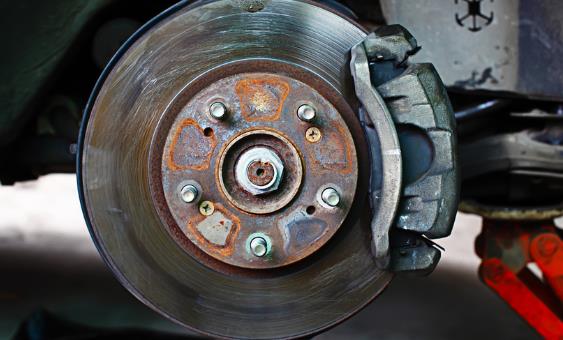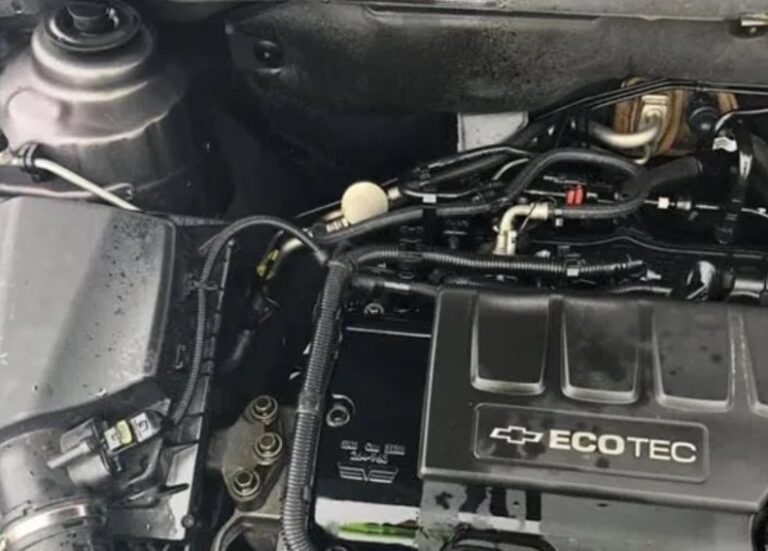Polaris Virage Not Getting Fuel [All Causes]
Why Does Polaris Virage Not Getting Fuel? In some Polaris vehicles, an impulse fuel pump connects the fuel tank and carburetor. As long as fuel is in the lines, it operates effectively. Vacuum lock can occasionally be overcome with a little assistance, though.
This typically happens after extended storage periods or when you run out of gas and the engine stalls. You keep cranking, but the machine won’t fire. When you put the choke on a heated engine, it will sometimes fire up and run, but other times it will just pop. It is possible to resolve this.
Table of Contents
Polaris Virage Not Getting Fuel
You most likely have debris accumulated in the engine or water in the fuel tank or engine. Visit your neighborhood auto parts store and get a bottle of the gasoline additive seafoam. The amount you add to your fuel should be according to the instructions on the bottle. If you run the waverunner on the treated gasoline, your issue should be resolved.

ATV Not Getting Fuel, Common Reasons
Check The Carburetor
I would first inspect the carburetor to focus your search on a starting point. Spray some carb cleaning or ether down the carb and test to see if your engine will start. Alternatively, start the carb by adding a little gas.
If it does start but immediately stops, at least we now know there is a fuel delivery issue to the carb. We are aware of this since the engine will start when the carburetor has fuel. Make sure that fuel is currently reaching the carb by checking.
You can experience a problem delivering fuel from the carb to the engine if it doesn’t start. That indicates that there is a bigger issue coming up. If that’s the case, there might be a compression problem. The engine lacks sufficient compression to draw in the necessary fuel and continue to operate. Later in this essay, I will go through how to perform a compression check.
The idle mixture screw needs to be adjusted as another carburetor check. It seems too good to be true, but frequently this adjustment isn’t set correctly, preventing the engine from receiving the required air/fuel ratio to function effectively.
Does The Carb Have Fuel?
You sprayed something into the carburetor, and the engine briefly fired up. That’s great, but now we need to make sure the car has the fuel the engine requires to run. Put the end of the fuel line into a bucket or other container to catch the fuel after disconnecting it from the carburetor.
Any spark plugs should be removed or simply unplugged, just in case. Additionally, attempt to start the engine, then check to see whether fuel is coming through the fuel line. If there is, there are no issues receiving gasoline from the gas tank, and the issue is most likely with the needle valve or float.
If no fuel is flowing from the tank down that fuel line, the fuel pump, if present, or a blockage in the fuel line or shut-off valve, if there, may be at fault. In a later section of this post, I will discuss how to diagnose the fuel pump.
Valve And Float For Needle
Your carburetor’s needle valve will not properly enable fuel to flow to the engine if it is rusted. The same thing will take place if your float becomes trapped. You’ll need to clean the carburetor and, if necessary, replace any worn-out components.
First, remove the float bowl from the carburetor to access the carburetor interior. The pin keeping the float in place can then be removed. Before that, you can move the float with your hands up and down; it should move easily and with little resistance.
Here is a photo of the needle valve that will be mounted to the underside of the float. Try using carb cleaner to clean the needle valve. Submerge the item and let it soak for a few hours in carb cleaner.
It’s okay if that wasn’t helpful or you don’t want to do it. Online, needle valves are reasonably priced. To help you find what you’re searching for, below is an Amazon example of a carburetor float valve needle.
In most cases, you don’t need to replace the float, but if you must, I recommend thoroughly cleaning it. Since you have the carburetor open, double-check all the seals and everything, then thoroughly clean everything.
Take Off The Needle Valve Seal
Check the bowl gasket; you would have already observed the carburetor leaking fuel if it were defective. You’ll need a pick or something to remove the valve seal from the carburetor to verify and replace it. A sheetrock screw has been used before. Simply insert the screw a bit more and remove the seal.
To better understand what you’re seeing, glance at the photo. After removing the old seal, place the new one and ensure it is fully placed. You could use a metal punch or something to accomplish it, but be careful not to strike too hard to avoid damaging the carb’s aluminum frame. You can reassemble it with a new needle valve and proceed.
Test The Fuel Injectors
If fuel injectors aren’t cleaned frequently, they may eventually become clogged. Small holes at the fuel injector’s end allow the fuel to pass through and create a spray that enters the cylinder. If those holes become clogged, the spray will not work, and your engine won’t start.
Try to clean your fuel injectors before purchasing new ones because they can be rather pricey if you believe they may cause the issue. You must first unhook the gasoline lines from the fuel injectors.
You could always completely remove and bathe the fuel injectors in fuel injector cleaning. You can use any carb cleaner or fuel injector cleaner you desire. I use this B-12 Chemtool Thru-Rail Fuel Injector Cleaner.
You can try an alternative way if you don’t want to remove the fuel injectors. The gasoline lines must still be removed, and the gas must drain completely. The fuel lines will then be reconnected once you have added fuel injector cleaning to the fuel line.
For at least 20 seconds, try to start the engine. Keep it from running for more than 20 seconds if it does start. After that, you should wait for around 10 minutes. Allow the fuel injector cleaner enough time to complete its task. Five more times, attempt to start for 10 seconds and then leave the mixture to sit for ten minutes.
Although it’s not the recommended method, I’ve seen it work, and it can spare you the trouble of removing the injectors. Add a fuel additive to your gas to keep the injectors clean after starting the quad.
In any case, you ought to be carrying out this procedure annually. Every year, I do it with my maintenance inspections before the start of spring. Prior to starting it up for the season, I typically just put some of this Gumout Complete Fuel System Cleaner in the gas tank.
Does The Fuel Pump Function Properly?
Try blowing air through the pump to ensure that fuel can flow smoothly through the pump. But you won’t be able to accomplish it without a vacuum-operated pump.
There are diaphragms within that might become harmed. Pull the vacuum line from the fuel pump and start the engine to check that the vacuum-operated fuel pump is operating properly. You should notice a sizable amount of suction at the carb’s mouth.

The fuel pump receives a vacuum pulse from the engine, which causes pressure to build and force fuel into the carburetor. Make sure your vacuum lines are not cracked, and consider changing the fuel pump’s diaphragms if you’re having trouble getting good suction.
Try cleaning the fuel line and replacing the filter to ensure fuel goes to the carburetor. Examine the gasoline pump for wear and hoses that are loose or damaged. Your car won’t get any gasoline if the hose has no vacuum.
Most likely, a defective fuel pump or a crack in the vacuum fuel lines is to blame for this. Since fuel pumps are typically not very expensive, you could find it simpler to replace the fuel pump altogether.
Test Compression
The compression check is rather simple; you are determining whether your engine can withstand the necessary compression to function properly. You won’t get fuel without compression, and your ATV won’t start.
If you don’t have a compression tester kit, the instructions are easy. To perform the test, you remove the spark plug, connect the compression tester, and turn it on. All you need to do is ensure your engine is in the compression cycle’s down stroke.
Is Your Jet Ski Bogging Down?
Bogging happens when the carburetor feeds the motor with too much fuel. As a result, less air is forced through, making the engine work harder to reach its maximum power.
You can experience the sensation of ploughing through water, or the Jet Ski isn’t moving fast enough to rise above the water’s surface. Don’t freak out if this happens. A few tried-and-true solutions should help you rapidly repair the issue and get back to work in no time.
Pump Detritus And Impeller Tubes
The first step is to confirm that it is truly “bogging down” and not simply operating slowly due to junk in the intake. Every PWC owner experiences this at some point. Your skin will start acting like it is dying as it sucks up debris.
Therefore, SHUT IT OFF immediately if you’ve been running normally, and then suddenly, your ski slows down and becomes unresponsive to the throttle.
Although it won’t be bogging down, your engine will sound and feel like it is. On the water, turning off the ski in a secure location and vigorously rocking it back and forth will solve the problem quickly.
It’s your goal to remove anything that might have been sucked up. If it doesn’t work and you are in a safe area, get off the ski and check the intake for debris. Use a mask and clear water. Next, have a look at the back output tube.
Go to my page about operating jet skis in shallow water if you can’t discover anything that’s simple to remove. There, I walk you through the entire process of eliminating debris. Try all those steps if you notice something but can’t reach it. However, if your engine is the problem, stay reading.
Examine Each Fuel Line And Filter
The best place to start is by looking at every piece of equipment involved in the fuel relay process, as the main reason a jet ski bogs down is too much gasoline entering the carburetor and engine.
The overall fuel system, fuel lines, air filter, fuel valves, choke (described in this post), and carburetor filters are all included in it. The parts may differ relying on the brand and model of your jet ski. If you lack mechanical aptitude or training, consider hiring a pro to perform the labor-intensive task of inspecting your jet ski from top to bottom.
Sometimes the issue is only a worn-out component. Regular maintenance is essential for keeping an older craft in good working order and preventing accumulation and debris from wearing down the sensitive engine and fuel system components. The older the Jet Ski gets, the more natural ageing and deterioration from ongoing moisture exposure is to be anticipated.
But if your system is spanking new and you still have bogging problems, it might be a malfunctioning component instead of a worn-out one. Early diagnosis is crucial in this situation because you want to reduce the possibility that a part placed incorrectly or damaged would affect surrounding parts.
A jet ski is a precision tool. Thus, it needs to be in top condition to function properly. To do repairs, you must know exactly which parts are required because there aren’t any “one-size-fits-all” parts. If the fix is straightforward, such as changing a gasoline line or a clogged, old filter, you may anticipate getting out on the water quickly and affordably.
Rebuild Or Change The Jet Pump
The jet pump is the next area you or your Jet Ski mechanic should investigate in circumstances where the issue extends beyond a damaged fuel line or blocked filter. These essential propulsion elements increase water pressure before it makes its way to the Jet Ski’s back and is ejected.
This procedure provides power and engine control. Your jet ski will operate flawlessly when it is in peak condition. The engine’s capacity to handle power can be substantially hampered if it is broken, blocked, or otherwise malfunctioning, which will slow down your acceleration attempts.
Many responsible Jet Ski owners schedule regular repairs or replacements for their jet pumps. It makes sense that they are frequently among the first parts to malfunction because they are the sections that carry out the majority of the labor-intensive tasks when it comes to the inner workings of the machine.
The jet pump is frequently the first place water-borne minerals and debris come into contact with because it harnesses water pressure. Over time, these issues may accumulate and become very problematic. If the debris is significant enough, it may also result in a system corruption that, if left unattended, may damage the entire propulsion system.
Conclusion
Did you know why Polaris Virage Not Getting Fuel? For the same reason that there isn’t enough restriction to produce a vacuum and suck fuel into the car, a vacuum-operated fuel pump or system won’t function efficiently without an air filter. Covering the carb inlet will create a vacuum, which will draw fuel into the carb. That’s why if you’re experiencing difficulties starting without an air filter.

Welcome to the exhilarating world of Matt Rex, a professional car racer turned renowned vehicle enthusiast. Immerse yourself in his captivating blog as he shares heart-pounding adventures, expert reviews, and valuable insights on cars, trucks, jets, and more. Fuel your passion for speed and discover the beauty of vehicles through Matt’s engaging stories and meticulous expertise. Join the ever-growing community of enthusiasts who find inspiration and expert advice in Matt Rex’s blog—a digital hub where the thrill of speed meets the pursuit of knowledge.







